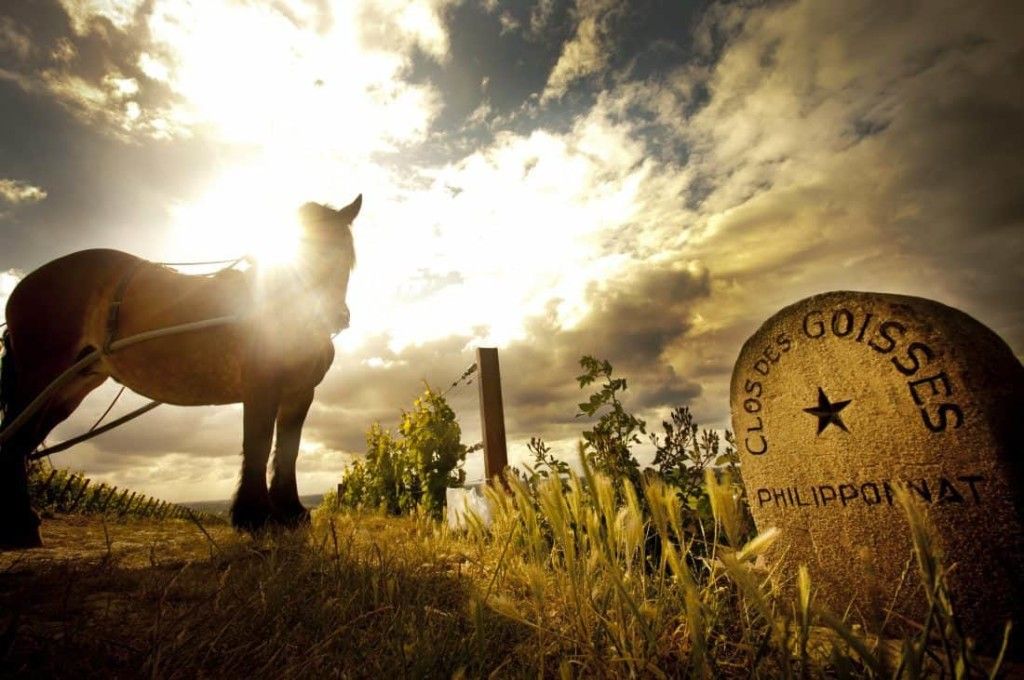Before we start tasting, Philipponnat counsels that “all the wines are meant for the table, they cannot be an aperitif they have to be at the table.”
The wines from Clos des Goisses are a legend in their own right. As the first-ever single-vineyard Champagnes, first made in 1935, their place in history is secure. Charles Philipponnat, chef de cave, has now released the first 311 bottles of the 3,149 bottles that were made of the 1995 vintage – after 25 years of ageing on lees. The bottles were disgorged in March 2020 and Anne Krebiehl MW was allowed to sample the wine alongside Clos des Goisses 2011, Les Cintres 2010 and Clos des Goisses Juste Rosé 2009. The name for this exceptional wine is Clos des Goisses 1995 L.V. Extra Brut – standing for ‘long vieillissement’, or long ageing.
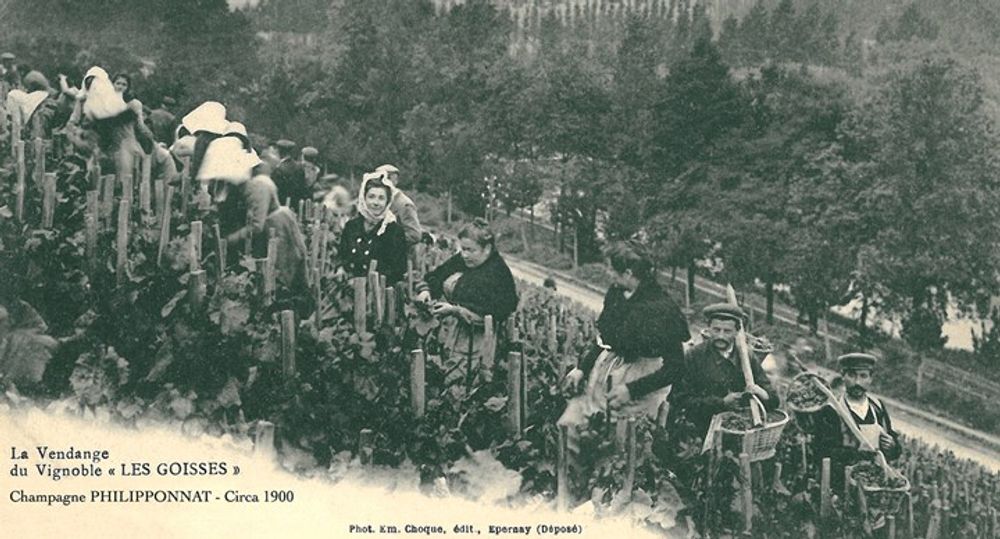
“This is part of our new range of late releases,” Charles Philipponnat said. “The idea is to release a vintage of Clos des Goisses every year after 25 years of ageing on lees in the bottle. It’s a similar idea to Bollinger’s RD [récemment dégorgé, i.e.recently disgorged} or Jacquesson’s DT [dégorgement tardive, i.e. late disgorgement]. We created our own LV, or long vieillissement.
The wines were stupendous, making for a very happy morning and a long discussion with Philipponnat who tasted alongside, albeit via Zoom.
Before launching into the wines, here is some background: The village of Mareuil-sur-Aÿ sits on the 49th degree of latitude, at 49.04 degrees north, to be precise. Its most famous vineyard is Clos des Goisses, owned by Champagne Philipponnat since 1935. Why is it famous? Because it was Pierre Philipponnat who made the first ever single-vineyard Champagne from it, originally calling it “Vin de Goisses”.
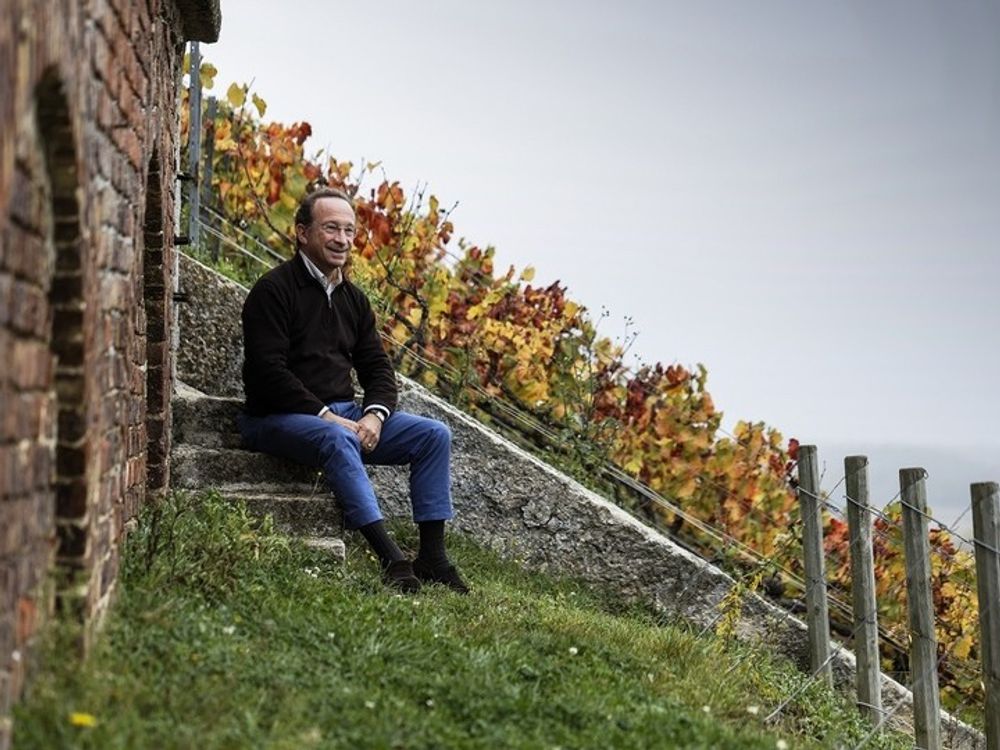
Charles Philipponnat at the Clos des Goisses
But there is more to it: this vineyard is emblematic of cool-climate viticulture. In the long centuries before global warming, Champagne’s climate was marginal; the most prized vineyards where those where grapes actually ripened. Clos des Goisses is such a site: it is the fully south-facing slope of the Mont de Mareuil on pure, solid belemnite chalk rising from 85m to 130m at a gradient of up to 45% – exceptionally steep for Champagne. At this angle, the vines catch far more sun, from sunrise to sunset. This site is exceptional.
Charles Philipponnat said: “We know from local maps and engravings beginning in the 16th century that this slope had always been planted with vines.” It is safe to assume, though, that such an outstanding site had been planted for much longer. Philipponnat noted that the vineyard is right in the “historic heart of Champagne” that was designated a UNESCO world heritage site: the south-facing slopes from Cumières to Bisseuil. “I don’t know who the owners were at that time but the Clos itself was created with the building of the walls, and started to be promoted as ‘Les Goisses’ when the Bouché family owned it.” They had the walls built in the 1860s, so-called ‘cintres’. Cintre means arch and refers to these arched brick walls. “The long wall at the bottom that my grand uncle built is drystone. He also built the top wall, effectively enclosing the vineyard.”
While the Bouchés, cousins of the Philipponnats, had taken great care of the vineyard, the ravages of phylloxera and the early 20th century had been unkind to Champagne.
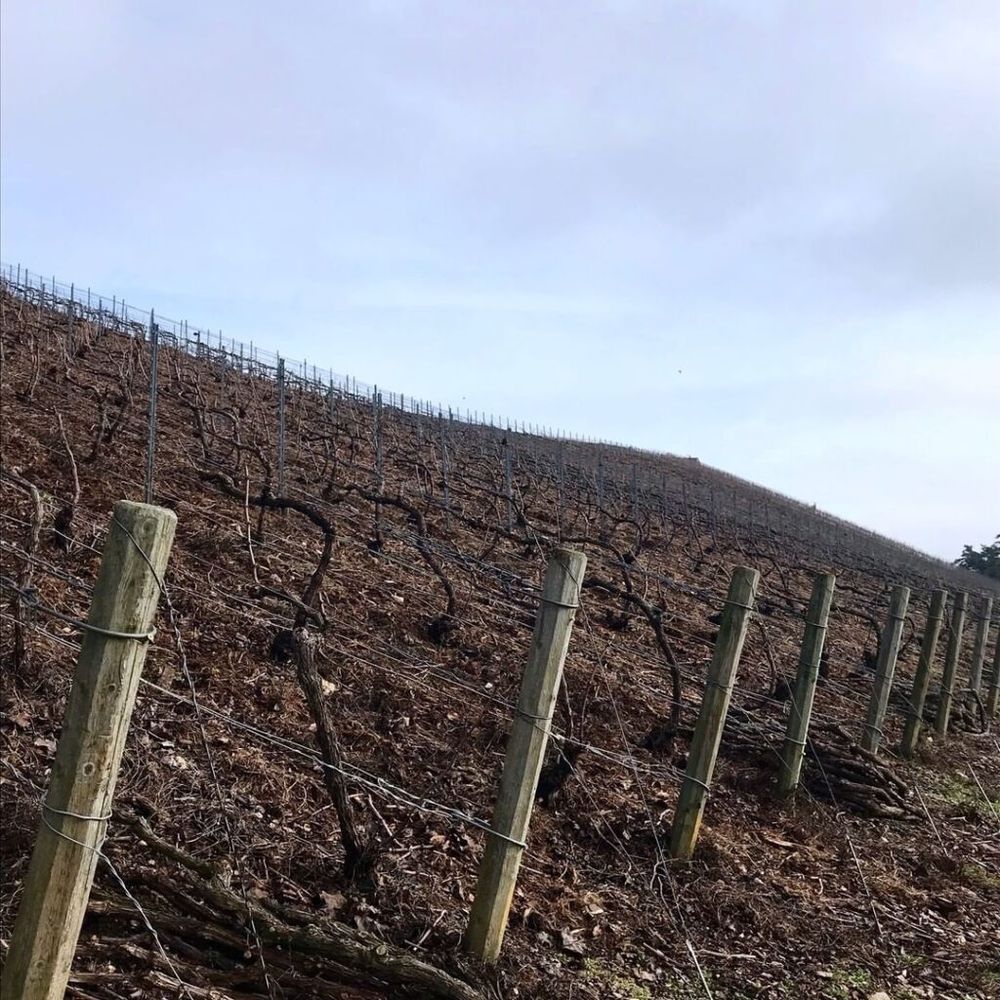
Clos des Goisses in winter
“When my grand uncle purchased the vineyard in 1935,” Philipponnat said, “the vineyard had almost been abandoned: because it was hard to cultivate, because of the war and the phylloxera crisis, because times were hard in Champagne. But my grand uncle knew, because of the family tradition. He was there in Mareuil-sur-Aÿ, he knew he could do something exceptional with it and he immediately made a Les Goisses bottling in 1935. He did not just buy a vineyard; he knew exactly what he was doing. He wanted to make a single-vineyard wine which was virtually unheard of at the time. He started tending the vines that still existed and replanted the slopes that had been abandoned due to phylloxera. The vineyard really had died and the former owner had not replaced the vines.”
Philipponnat noted that at the time of the purchase in 1935, its size was 2.4ha with other parcels still under different ownership. Over time, until about two years ago, Philipponnat bought parcels and exchanged others, in order to purchase the entire slope. “Now it’s a real monopole,” Charles said, “it took 90 years.”
Today it measures 5.83ha, divided into 14 parcels. “Clos des Goisses is large enough, so we can make wines separately, part in stainless steel, part in wood and then blended. Blending means choosing, it also means eliminating, being selective, so that we always have the best possible wine,” Philipponnat said.
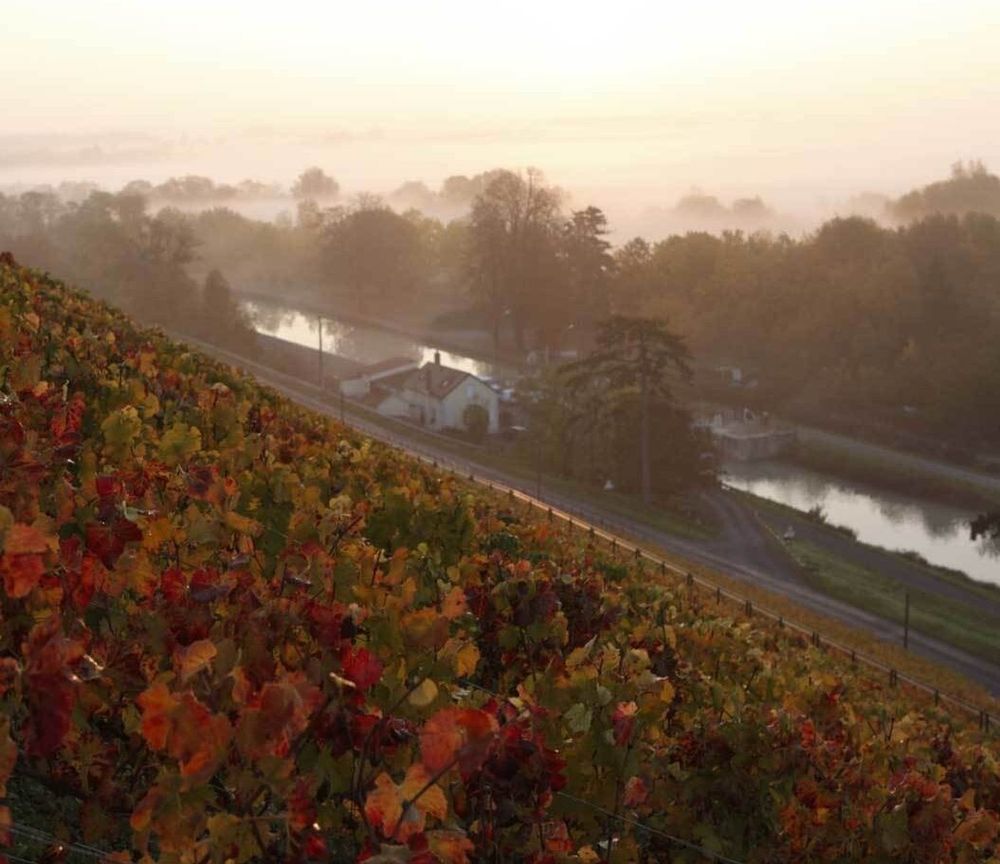
Sunrise over the Clos des Goisses
“The subsoil is of solid belemnite chalk,” he explained. “The topsoil is usually a rendzina, which is chalk debris that freezes in winter, almost turns into powder and mixes with the organic matter on top. It turns into very soft matter with a high active lime content. The organic matter of course was brought by centuries of men, centuries of fertilisation. In a place like Clos des Goisses the topsoil is even thinner, due to erosion, since the slope is very pronounced. In the middle of Clos des Goisses, in Les Cintres, there is less than a foot of topsoil, sometimes half a foot, and if it rains, and the topsoil runs to the bottom, we have to shovel it back to the top of the vineyard.”
Philipponnat noted that “what is beautiful about a single vineyard, if the terroir is exceptional, is that it can be turned into a great wine regardless of the vintage. In Clos des Goisses we have made a vintage every year since 1988. Just like the top parcels in Burgundy deserve to be made into a wine every year.”
Commenting on the golden hue of the white Champagnes, Philipponnat noted that “the grapes are very ripe, some of the colour still passes into the wine, and the very light pink colour that we have in the must, a light rosé colour, turns to yellow after a while. That is where that deep hue comes from.” He added that there “always is a slightly overripe character in Clos des Goisses.”
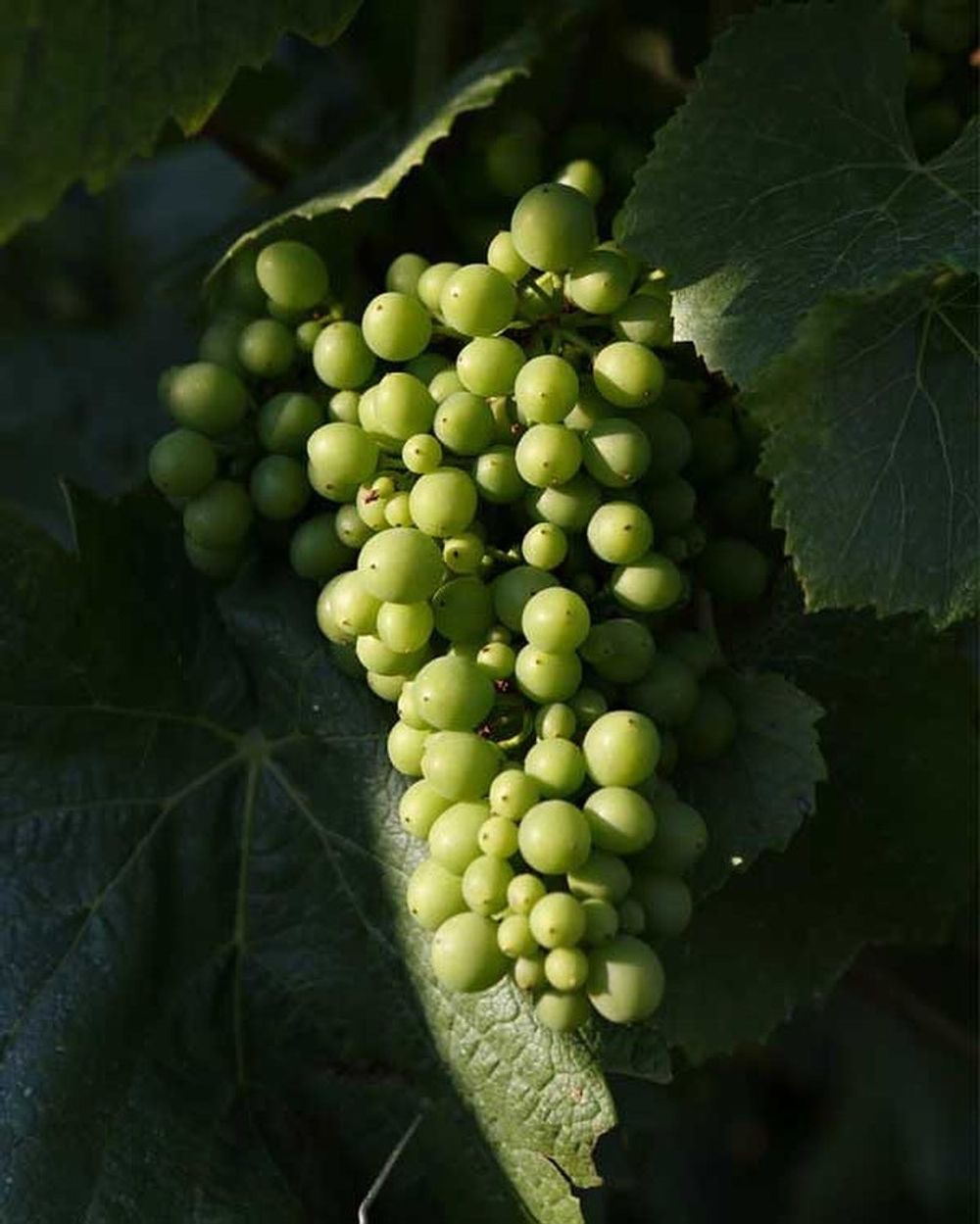
Today, with a warmer climate, Clos des Goisses is one of the warmest sites in Champagne, its temperature 1.5°C higher than the Champagne average for the growing season. Noting its unusual steepness, exposure and emblematic nature, Philipponnat said: “It’s true that it is a northerly (latitude) vineyard. Despite global warming it will remain so for some time. I am not afraid at all of warming, considering our experience with vineyards like Clos des Goisses. We get a lot more ripeness than the rest of the region. If Champagne can gain another degree of potential alcohol at the time of harvest, it is actually a good thing. We just have to learn proper winemaking and retain freshness in the wine. Intensity and taste is what we are looking for, but it mustn’t be at the expense of that freshness and saltiness of the wine. Because then it will come into balance with the flavours of the grapes.”
Philipponnat points to the residue of wine in an empty glass and the tell-tale smell that gives the true measure of Champagne: “The moment of truth is the empty glass,” he said and likened the notes of unripeness that can still be found in Champagne, notwithstanding global warming, to “the smell of rotten hay.” That, he said, is never the case for Clos des Goisses. “There is no greenness at all.” Unusually three of the four wines tasted also came with alcohol levels of 13%. It is precision and absolute attention to detail that makes this high-wire act possible.
Before we start tasting, Charles counsels that “all the wines are meant for the table, they cannot be an aperitif they have to be at the table.”
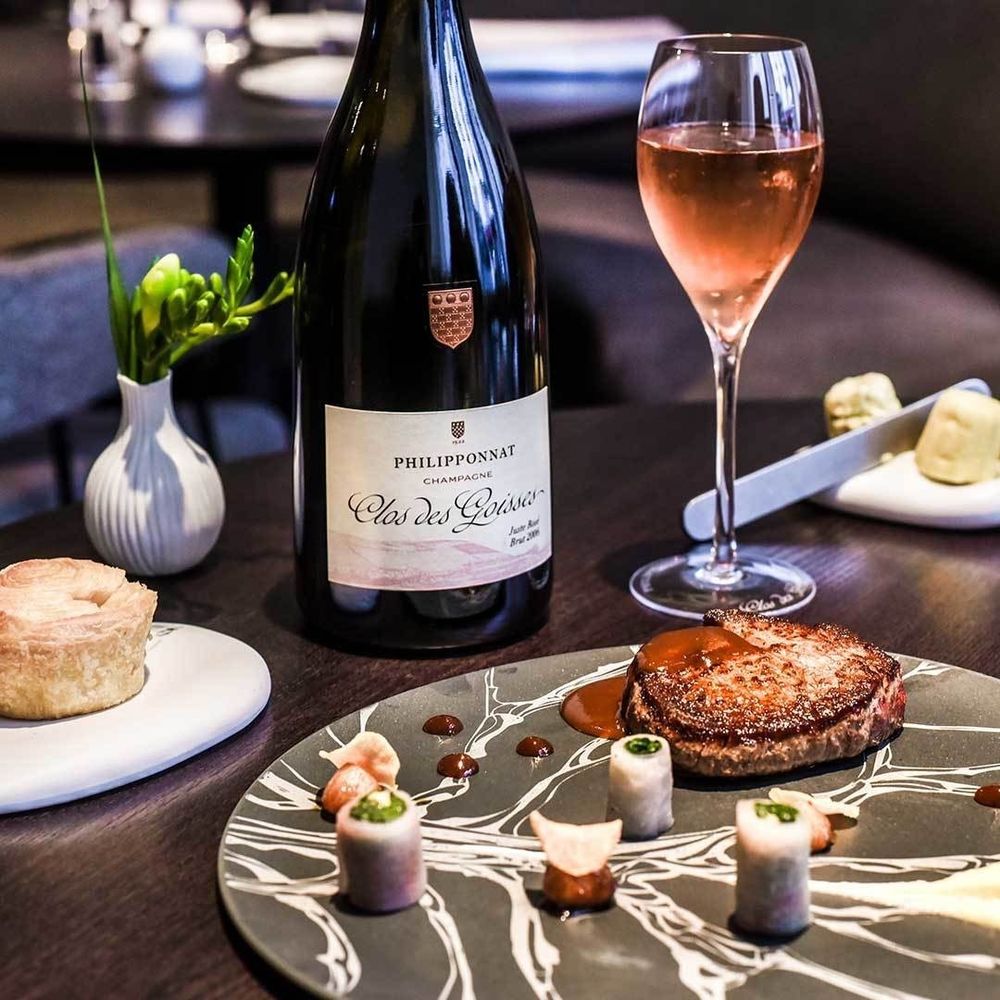
“They cannot be an aperitif…”
Champagne Philipponnat Clos des Goisses Vintage 2011 Extra Brut, 13%
100% Pinot Noir, 12,020 bottles made, disgorged in March 2020 with 4.5g/l dosage – NB 100% Pinot Noir is unusual for Clos des Goisses which usually also has Chardonnay
Initially this is softly scented, with notes of yellow apple flesh, a breeze of salty sea air and an edge of honeycomb. With more temperature it becomes ever more expressive, with fruity hints of fragrant wild raspberry. Later there is an incredible floral hit, almost of narcissus. There is something solid here, yet it is exquisitely slender. Exquisitely fragrant and so serene, the wine holds within it the contradiction of northerly latitude and sun-kissed generosity. With air more savouriness comes though, like extra-salty soy. Exquisite concentration, the depth of subdued autolysis really speaks in the creamy length. Solid but soaring, statuesque. My favourite.
Charles noted that “in 2011, the power is not so much in the weight, but in the very fruity flavour and the length. It resembles vintages like 2006 or 1999.”
Champagne Philipponnat Les Cintres Vintage 2010 Extra Brut, 12%
100% Pinot Noir, 1,391 bottles made, disgorged in March 2020 with 4.5g/l dosage
The nose opens with a certain smokiness and a sense of unbounded energy hits with very convincing force. This is all muscle and tone, this is strength and vigour, despite being ten years old it comes across as incredibly youthful. It seems like a genie in a bottle, like a thoroughbred raring to go, propelled from a core of freshness. A sense of smokiness remains and increasing temperature brings delicious smatterings of white pepper that are irresistible in the finish. The texture is creamy, and the freshness is eternally present but utterly buffered. Glorious, impressive, very young.
The smokiness, Philipponnat said, is partially down to fermentation in wood. He noted that special barrels were used, made by Seguin Moreau: “They soak the barrels in water and toast them while still humid. As a result, the heat will cook the tannins but without charring or colouring the wood. The toastiness is very light. This was the first time we used these barrels.”
Philipponnat explained: “Les Cintres is the steepest, most extreme parcel of Clos des Goisses, it faces full south. The Clos des Goisses vineyard is in a slight curve, the middle part is full south, this central part is very steep, so the radiation from the sun hits the soil at a perpendicular angle, it is also the parcel where the topsoil is thinnest. Les Cintres is like an essence of Clos des Goisses, it also has the oldest vines, it was replanted by my grand uncle in 1964.” Les Cintres was first made in 2006 and is effectively a single-parcel Champagne.
“2010 was a bit difficult but also special,” said Philipponnat. “It was quite ripe and, in a way, a little overripe. I remember tasting the wines before blending, they were a little bit too round; I was afraid that because of this they might age too fast. We therefore only selected the very driest of the wines. The result is not fat, the result is round. Even though there is that roundness, even though there is glycerine, with very ripe grapes and a slight touch of botrytis, we managed to preserve the crispness and structure of the wine. There are two ways a wine can be powerful, it can be big or fat, or it can be athletic. In these very ripe wines, there always is an eau-de-vie character and a serene, clear, cool thread of freshness.”
“The pH of the must was 3.3 which is normally what we get in second pressings. It was just so ripe. Little acidity is not a problem if you have purity and aromatic quality. When the aromatics are noble, they will age the right way and not oxidise. When you have that, you have purity; whatever acidity you have is transparent and not covered by heavy or oxidative flavours. At Philipponnat we are very careful not to be oxidative. Pinot Noir is a tricky grape, a naturally oxidative grape, if you go too far the other way it becomes too reduced. You walk the crest.”
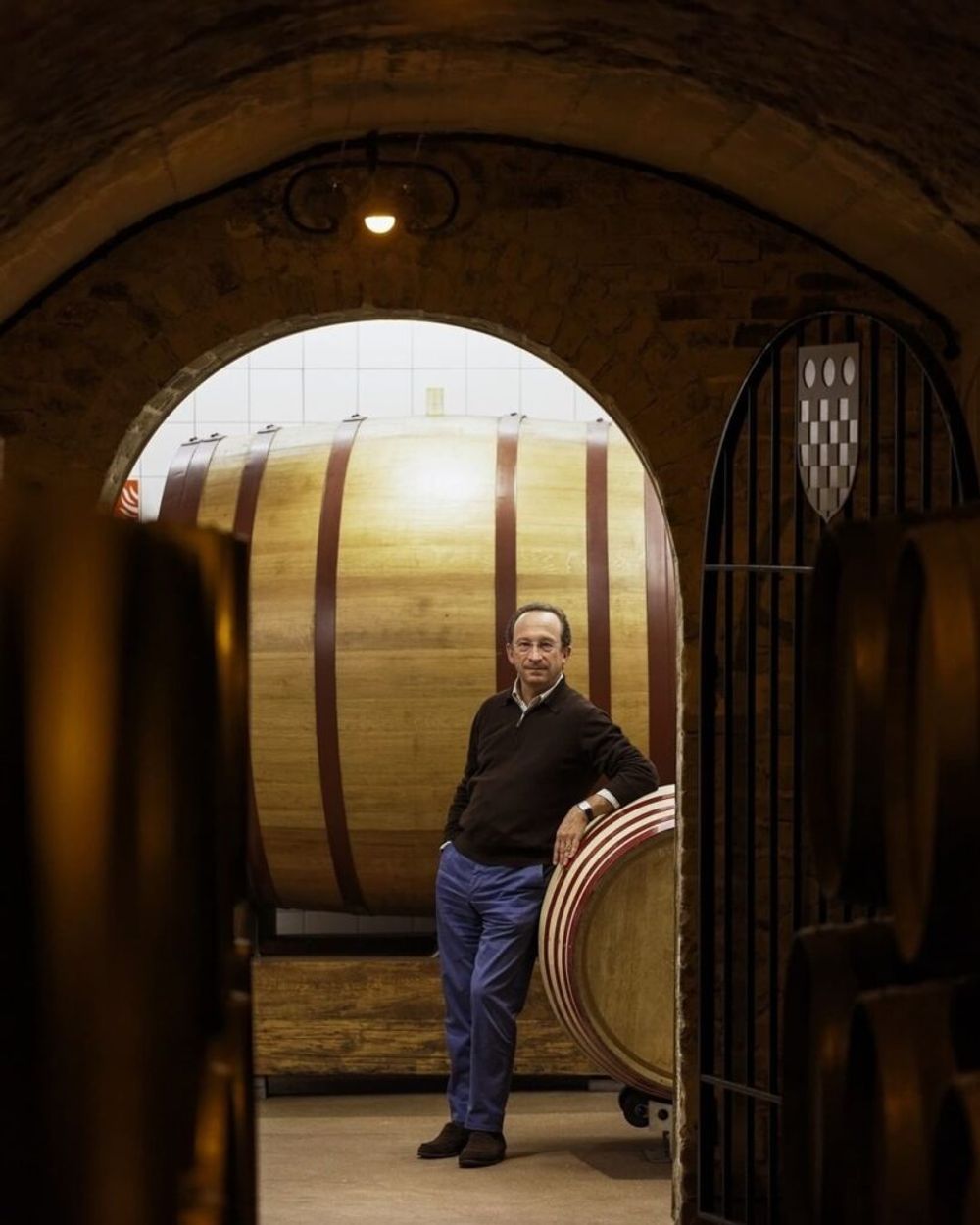
Champagne Philipponnat Clos des Goisses Juste Rosé Vintage 2009 Extra Brut, 13%
64% Pinot Noir and 36% Chardonnay, 2,508 bottles made, disgorged in March 2020 with 4.5g/l dosage
An incredibly intense nose: super-creamy with the finest touch of bourbon vanilla, cherry and bitter almond and again that edge of white pepper and a hint of tiny, ripe, red-cheeked vineyard peach. The body is rounded and has complete fluidity and an overtone of very ripe whitecurrant and redcurrant. Its beautiful depth recalls a resonant, earthy Pinot-ness of autumn leaf which starts verging into white truffle. There is something visceral, undeniably woodlandish and utterly seductive about it. A marvel.
“2009 was a very sunny, very ripe, very healthy vintage, it was a vintage that had all the perfect conditions, the perfect analysis. 2009 is about straightforward fruit with a great balance,” Philipponnat said, almost lacking an edge, he added and noted that beyond fruit, “there also are elements in the winemaking that build a stronger structure, like fermentation in wood and the way we blend our rosé wine, from very ripe grapes and some degree of maceration that brings in more tannins than just the tannins from the wood. This makes it a very serious rosé. We now use rosé de saignée blended with a white base, so that the rosé character is very delicate, but even then, since we use very ripe grapes, there is this strong character.”
“In the beginning when we first started making rosé in 1999, we released it before the white. We made the decision not to use red in the blend, but to use saignée, to add colour without adding materials that could become oxidative, and my experience is that saignée is more stable than just red. We don’t make it every year, we make it only when the rosé de saignée can be really good. Sometimes it is just too rainy or too cold.” Charles said the notions that are woodland and truffle to me, to him are of that black mushroom called trompette de la mort.
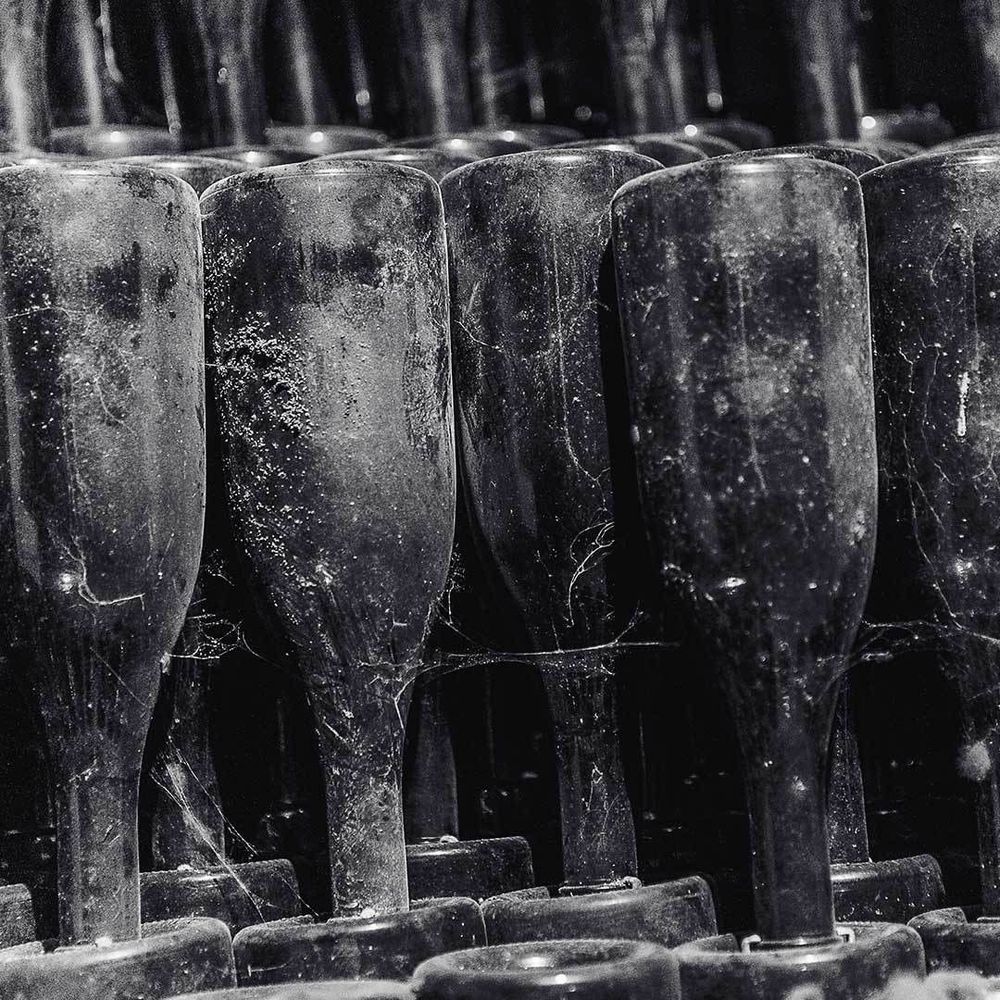
Champagne Philipponnat Clos des Goisses L.V. 1995 Extra Brut, 13%
60% Pinot Noir and 40% Chardonnay, 311 bottles disgorged in March 2020 with 4.5g/l dosage, of a total of 3,149 bottles made (including some magnums).
The nose is intense from the start, radiating the richness of thick, sweet, heavy cream. This creaminess is imbued with saltiness. A hint of white, fresh field mushrooms appears alongside an echo of candied lemon. There also is mirabelle, a flavour reminiscent of the caramelised edge of baked fruit. This is super-rich and more air and temperature procure a hint of spicy, salty maple syrup – without any sweetness at all, anchored in freshness and cool, pervasive chalk. With even more air there almost is a hint of chamomile. We taste the evolution of the fruit, notably not so much autolysis, there is no tiredness at all, just the delicious contradiction of mature freshness. Incredible length and intensity. A wonderful, absolutely unusual and show-stopping addition to Champagne’s illustrious gallery of late-disgorgement releases. A real experience.
“1995 is a beloved vintage of mine,” Charles said. “It was a short harvest, with spring frost, the yield was very, very small, hence the concentration. From the beginning, 1995 was a very ripe vintage of what I call yellow fruit, mango, very ripe peaches. The vintage was even smaller than 2010 – only 3149 bottles of this were made, so when it was ready for release we kept the whole vintage for late disgorgement. What could we have done with 3000 bottles? Around 2005, we sold about 300 bottles to Italy but there was no general release.”
All the wines are available in bond from Justerini & Brooks, Bordeaux Index, Fine Wines & Spirits, Berry Bros & Rudd, Farr Vintners, Corney & Barrow, Fine + Rare
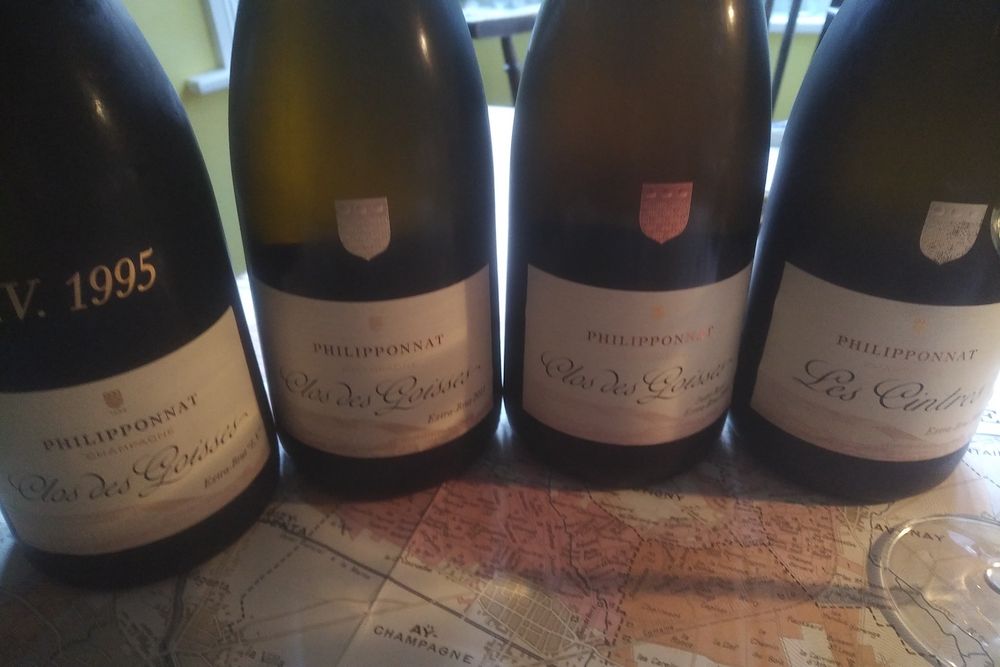
In bond prices are
- £ 660 for a case of 6x Clos des Goisses 2011 Extra-Brut
- £ 1200 for case of 6x Clos des Goisses Juste Rosé 2009 Extra-Brut
- £ 265 for bottle of Les Cintres 2010 Extra-Brut
- £ 450 for a bottle of Clos des Goisses “L.V.” 1995 Extra-Brut
Photographed against a background of the L.Lamart map of Vallée de la Marn, copyright 1944 by Louis Lamart Paris.
